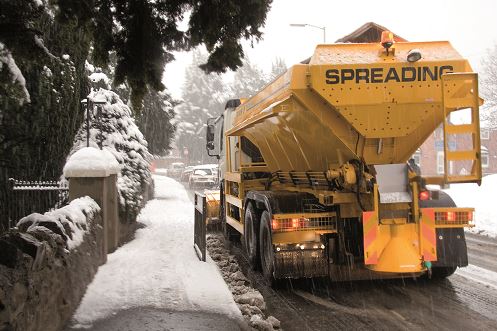Lets work together



Suite 3A, Chapel Allerton House, 114 Harrogate Road, Leeds, LS7 4NY
ukinfo@integrated-skills.com
+44 (0) 3300 888 670

Salting, gritting, and increasingly snowploughing, are all par for the course with a British winter; who can forget the recent “Beast from the East”? But the truth of the matter is winter maintenance starts as early as October and continues for the next 6 months in most parts of the country. A perfect storm of changeable weather and road traffic can make effective delivery of winter maintenance services a challenge, and a costly one at that.
So, what exactly are the main challenges? And what can you do about them?
Before we delve into the answers, let’s take a quick look at the ideal scenario when it comes to winter maintenance.
Gritters and mini tractors are dispatched in the early morning and late evening. The weather stays largely dry and gritting goes to schedule, completing within around 2 hours, with roads gritted in order of priority, from commuter corridors and other strategic routes to school and nursing home entrances, hospital perimeters and cycle paths. By the time rush hour commuters are on the road, all the grit is safely down.

When the cold weather approaches, everyone factors in more time to get to work. Even in the early morning hours, traffic can considerably slow down gritting, leaving gritters stuck in rush hour jams, which can also result in wasted salt. That’s not to mention the increase in unexpected road accidents that clog up carriageways too.
Often, sudden changes in weather complicates planning and severe weather snaps mean more gritting is needed, if rain is on the cards then gritting needs to be postponed to stop it being washed away, if frost follows soon after rain then gritters will simply run out of time to cover all the priority roads before rush hour. And then there is the snow.
Salting fresh snow doesn’t automatically mean it will melt. Salting only works if the snow is less than around 4 centimetres deep and there is enough movement of vehicles to shift the salt around. Heavy snowfall therefore means the ploughs need to be out and about before the gritters get to work. Yet more logistical planning to juggle.
So here is what you’re facing:
Smarter routes.
Flexibility of routes.
Smarter routes can keep gritting times down by plotting the most efficient way for gritters to cover the required ground. Smarter routes can be modified & dispatched on-the-fly to accommodate sudden changes in weather that shift gritting priorities or road traffic accidents that restrict access. Smarter routes can be downloaded to in-cab hardware to ensure drivers follow the optimal routes – at any time.
Smarter routes can also be combined with route based forecasting, see this document from the Met office.
Flexible routes can be modelled to plan for ‘what if’ scenarios. It sounds simple enough but creating smarter routes involves collating significant amounts of data for analysis. That’s where intelligent route optimisation systems come in, effectively optimising routes to make them faster and more cost-effective.
Integrated Skills provide a leading software solution for route optimisation, RouteSmart-for-ArcGIS™ as well as in-cab technology (Navigator), saving you time, money, salt/grit and helping you deliver safer streets throughout the worst of winter.
Would you like to know more about Managing the ‘Beast from the East’: Solving the logistical challenge of winter maintenance? Fill in your details below and let us know how we can help.
Website Designed & Built by we are CODA